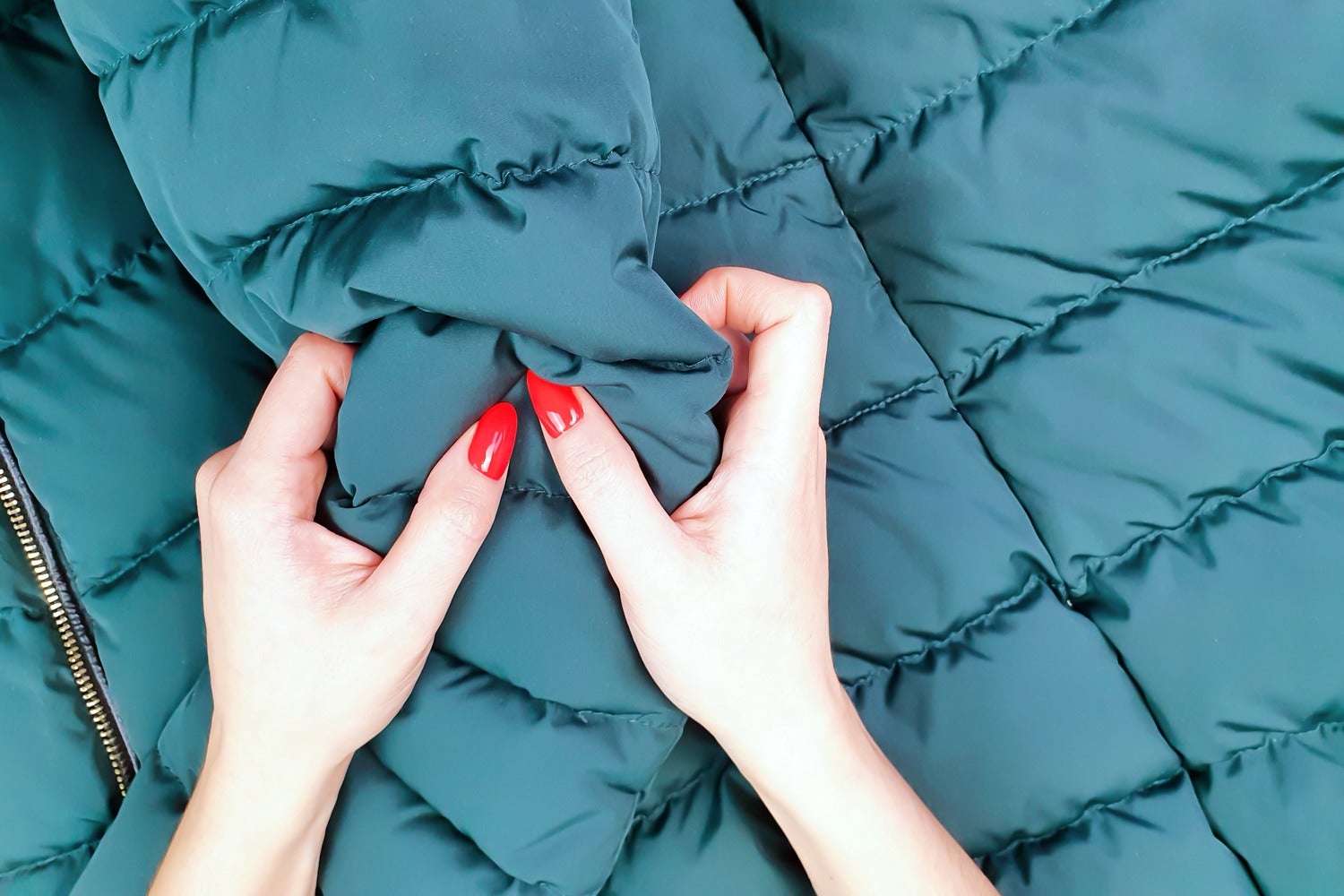When you’re faced with blustery winds and below-freezing temps, you’d wrap yourself in just about anything to keep the cold out. Standard puffer jackets are a go-to for protection from the elements, and the choice for shoppers typically means picking between down or a synthetic alternative.
Quilted coats stuffed with duck or goose feathers have been a mainstay for around a century. Down, which refers to the soft plumes located beneath the animals’ visible outer feathers, has thousands of minuscule fibers that crisscross in all directions, creating air pockets that are remarkably effective at trapping heat. It’s also lightweight and compressible.
But down has its dark sides. It’s expensive, and most material on the market comes from birds raised for food in factory farms, an industry that contributes around 11% of the global greenhouse gas emissions accelerating the climate crisis. Down’s status as a “byproduct” of the meat market in some instances (like, for example, this life-cycle assessment commissioned by the down industry) helps mask some of its unsavory side. As do voluntary certifications like the Responsible Down Standard that advocate for more humane practices, but even those aren’t a sure thing. A number of down jackets are also treated with PFAS—aka forever chemicals—to make them water resistant, which has a multitude of environmental and health impacts. (There are, of course, alternatives there, but for the purposes of this story, we’re primarily focused on the planet-warming potential of the fill itself.)
Over the last several decades, down’s pros (and cons) have inspired a wave of synthetic copycats looking to mimic plumage’s incredible insulating powers. Many of the offerings today, while plentiful, are—you guessed it—made of plastic. So, what’s a planet-conscious person to do when it’s time to bundle up? Luckily, you’ve got choices.
Good: Recycled polyester
Puffer coats that don’t use down are generally stuffed with a polyester fill. And these options do have some advantages over natural fibers. For one, they’re often water resistant, which means they won’t lose their shape and ability to insulate in downpours the way down might. Alternatives are often more affordable, though generally they aren’t as warm. That’s why experts recommend snagging synthetic-filled puffers that are on the heavier side to guarantee optimal toastiness.
If you do go synthetic, opting for a coat filled with recycled polyester is a better choice than one filled with virgin plastic. Tentree, Patagonia, and even mall classics like Gap stock puffers with 100% reclaimed fill.
Better: Recycled down
Down is beloved for many reasons. “It’s natural—if it ends up in the environment it’ll biodegrade. It’s high-performance,” says Alden Wicker, author of To Dye For: How Toxic Fashion Is Making Us Sick—and How We Can Fight Back. Recycled down has all of those benefits, plus it’s more environmentally responsible. It reduces reliance on freshly plucked plumage and keeps postconsumer waste that typically can’t be resold, like the innards of cushions and bedding, out of the landfill. Patagonia says every kilogram of insulation made from its recycled down reduces carbon emissions by 33% compared to virgin down.
Recycled down requires less transportation and energy than new—and there’s no need for physical land to house the birds, nor the food and water required to feed and hydrate them, says Jonathan Uretsky, the COO of Allied Feather and Down. And it’s becoming more common: Brands like Patagonia, Rab, and The Recycled Planet Co. offer puffers insulated with second-chance down (just type “recycled down” into their site search to find ’em).
Best: Preloved down
The best option probably doesn’t come off a traditional retail rack. If you don’t already own a jacket, try the thrift shop or check out an online secondhand marketplace like Geartrade. If you have one, consider repairing it instead of jumping for a replacement. “In general, most down puffer jackets—if they’re well maintained—should basically last forever,” says Matt Kuosmanen of Rainy Pass Repair, an outdoor gear repair shop in Seattle. Proper down maintenance includes regular washing, ideally at least every other month. It’s important to use a special, down-formulated wash designed to help re-loft the fill and get it as “puffy and poofy as possible,” Kuosmanen says.
As for repairs? The most common puffer failure involves some kind of tear in the coat’s shell, whether that’s from snagging an arm on a branch or a puppy trying to steal a treat. For a quick fix, you can use patching tape like Patagonia’s Tenacious Tape. These types of patches are great in a pinch as a temporary solution but will eventually wear off. For long-lasting repairs, a tailor or gear repair shop can sew on a proper patch. Many outerwear brands also offer (sometimes free) repair programs, including Patagonia, Arc’teryx, Rab, Gore-Tex, and 66° North.

